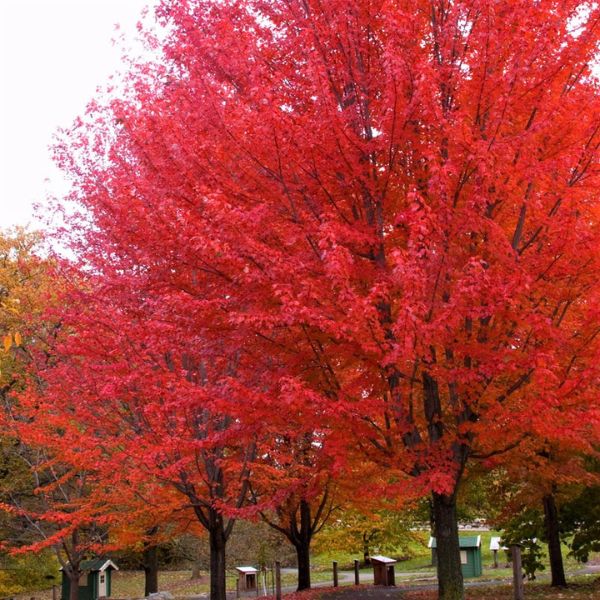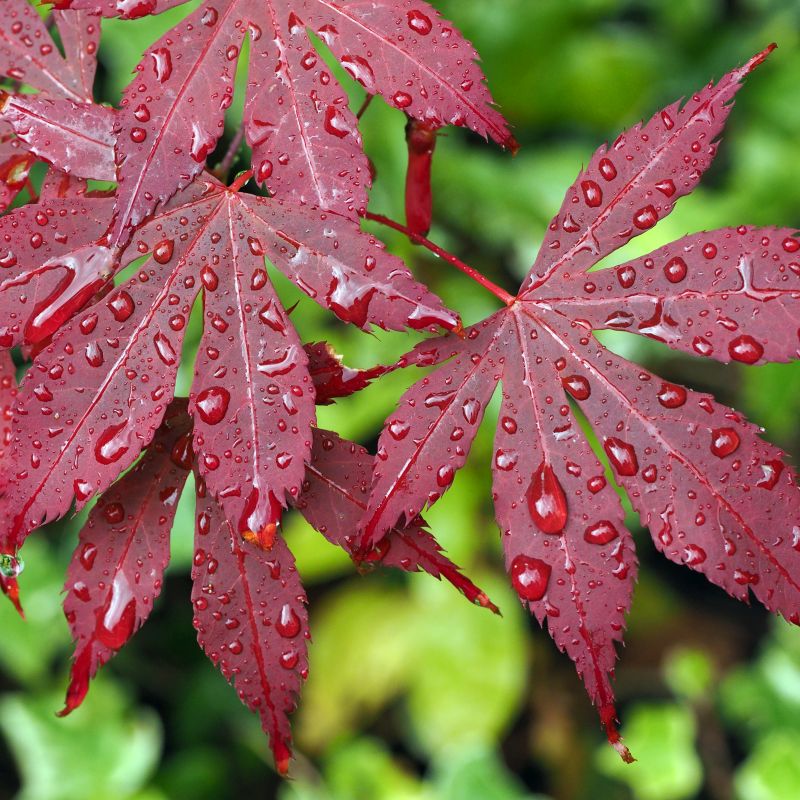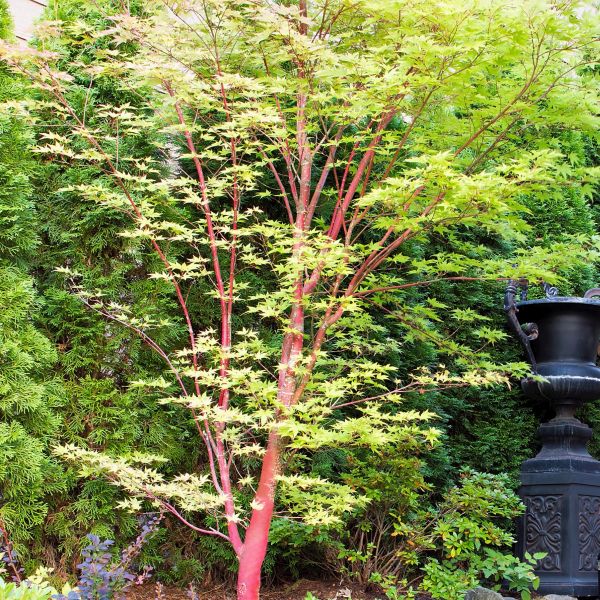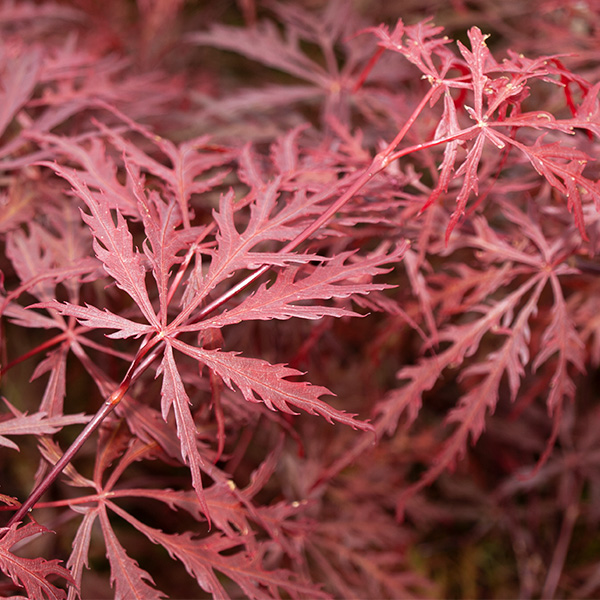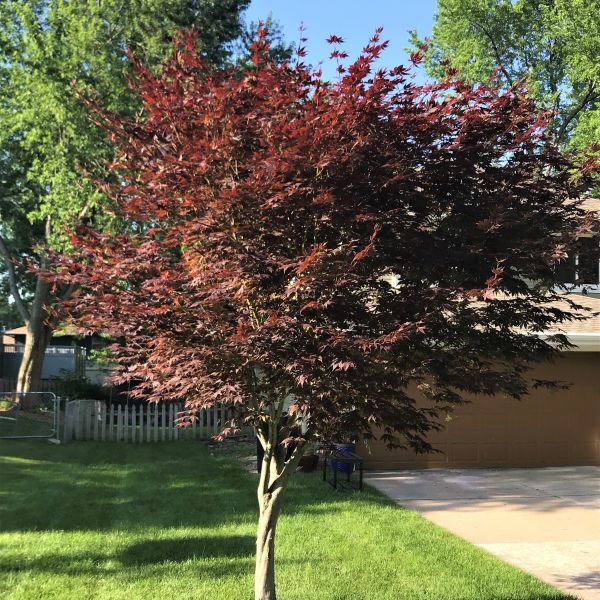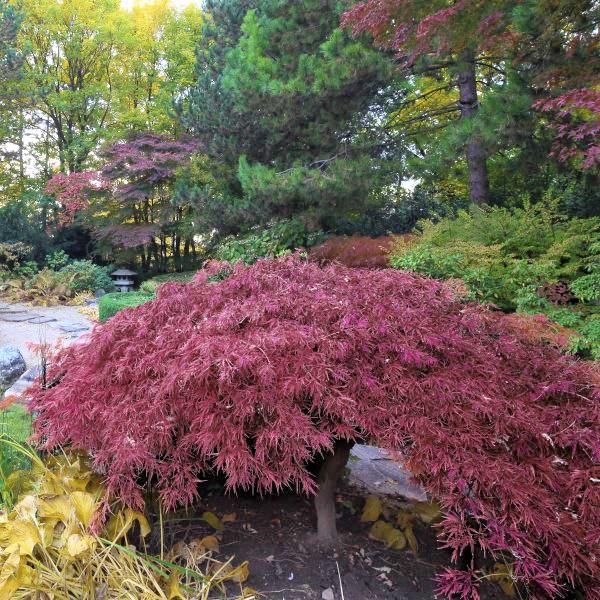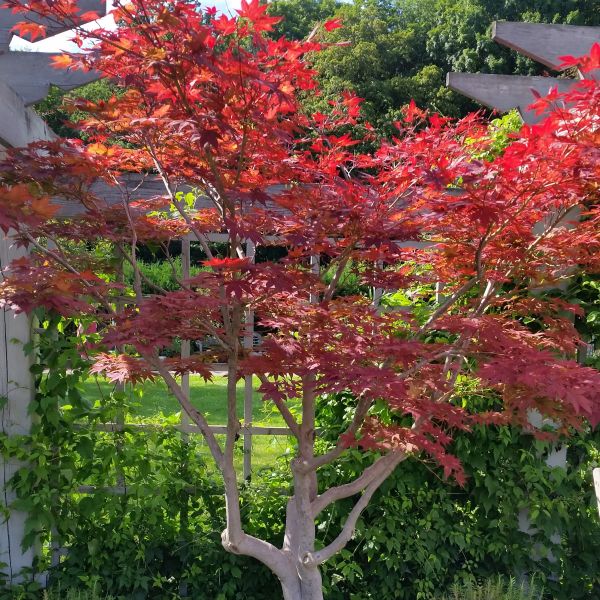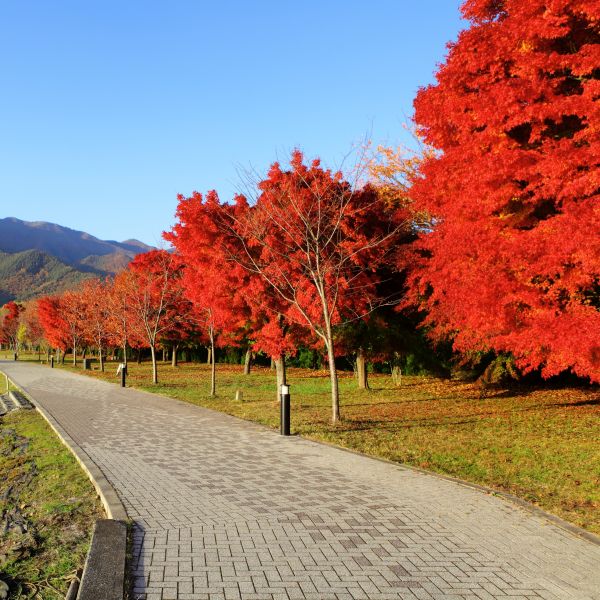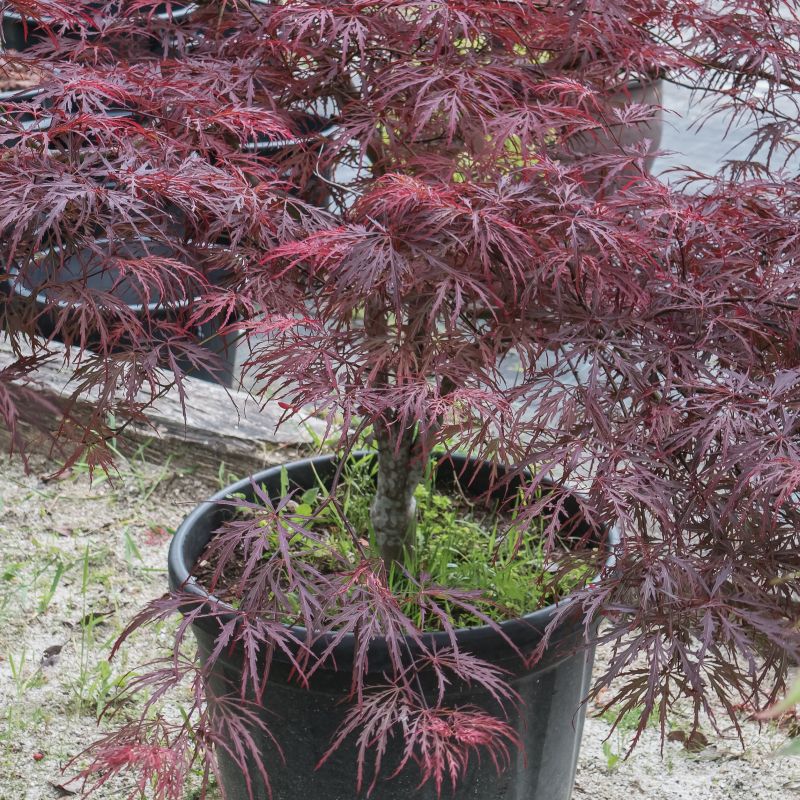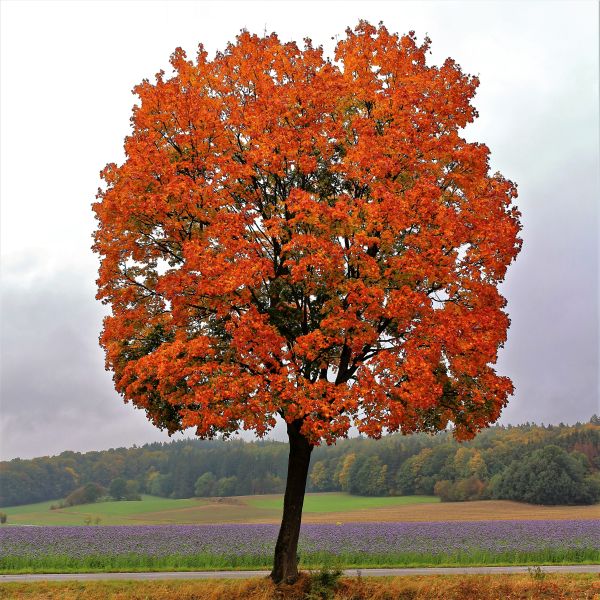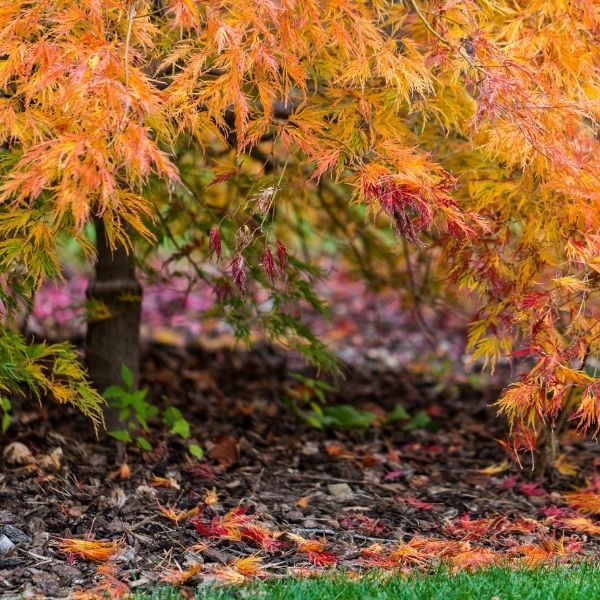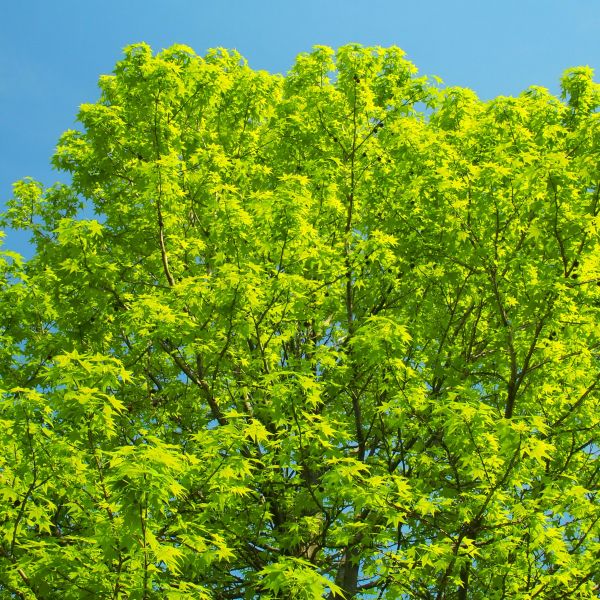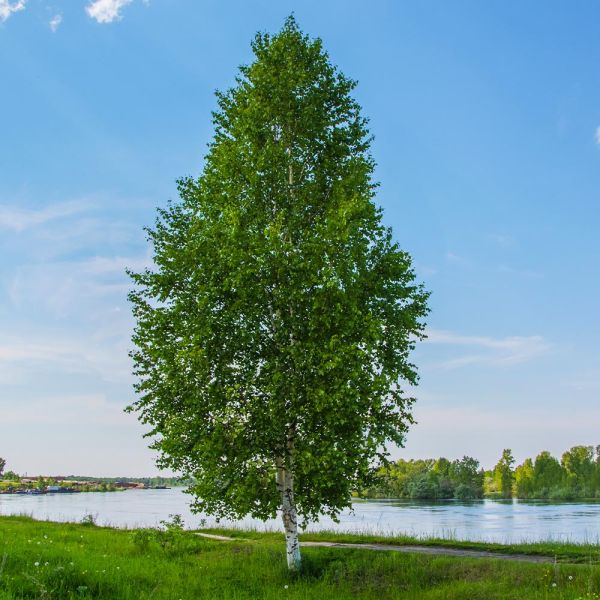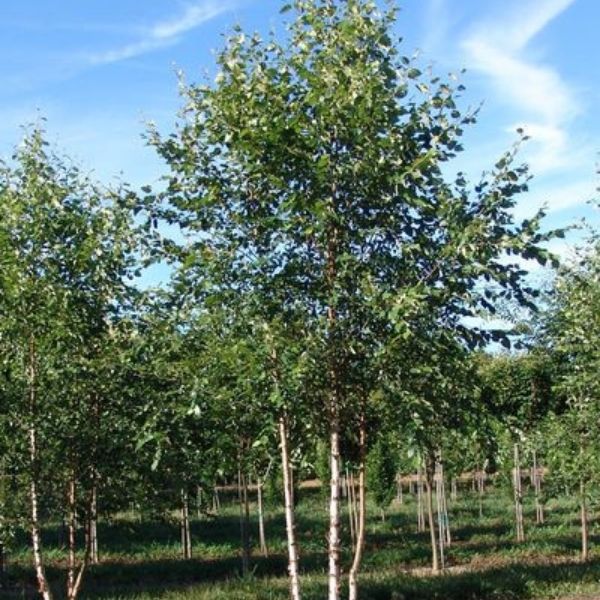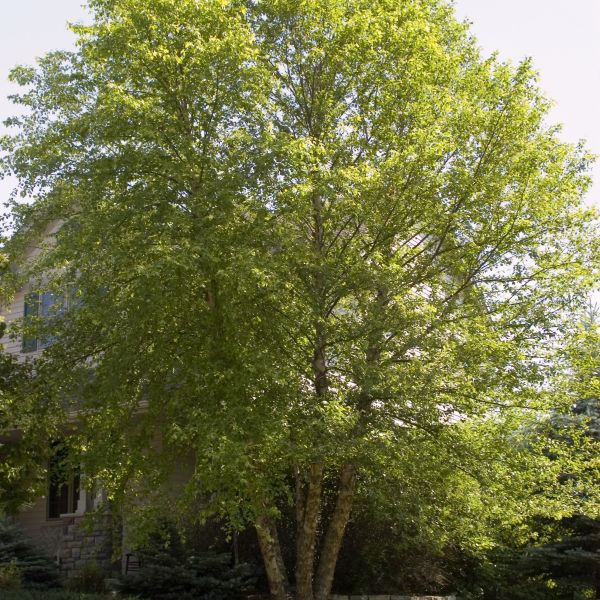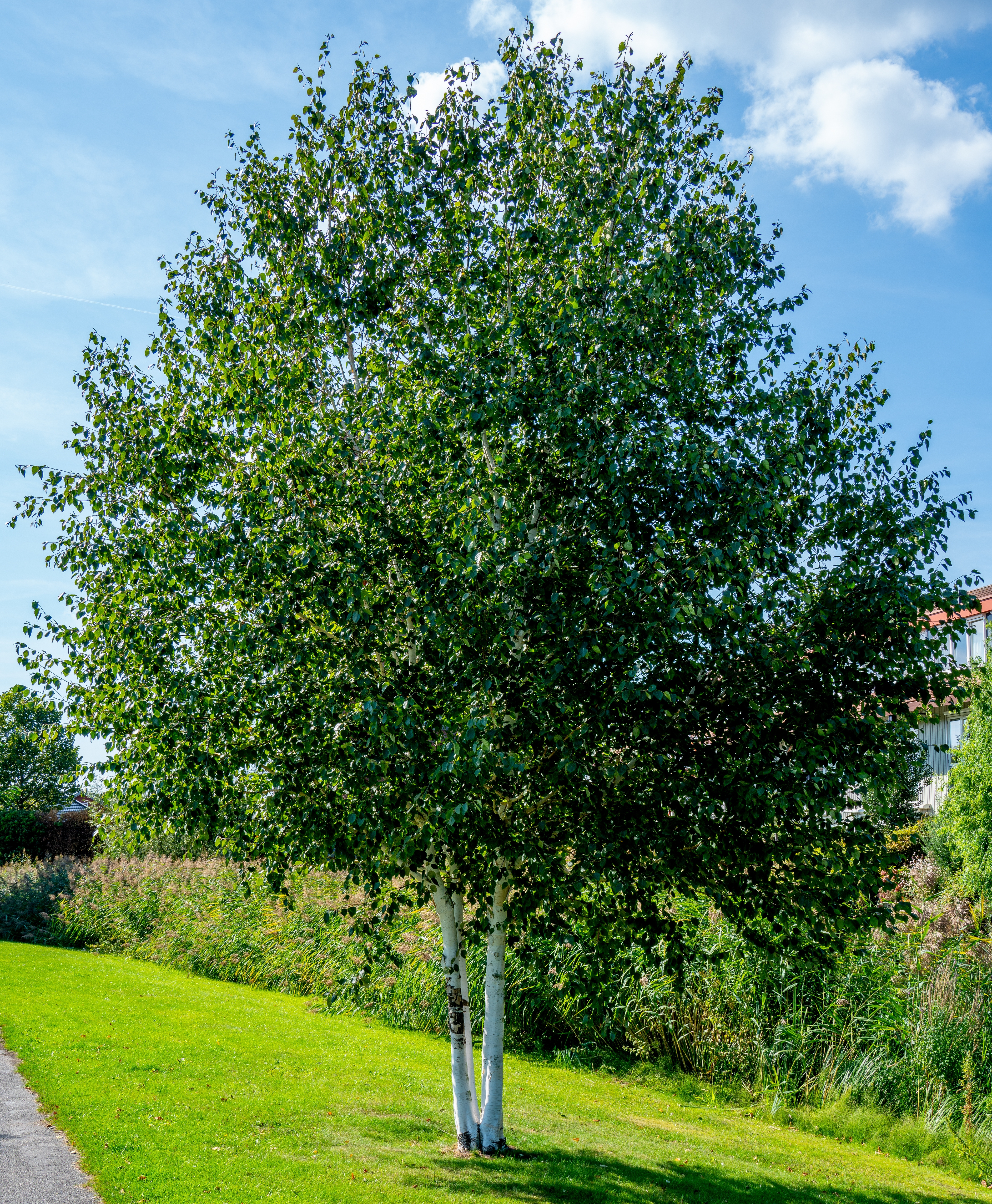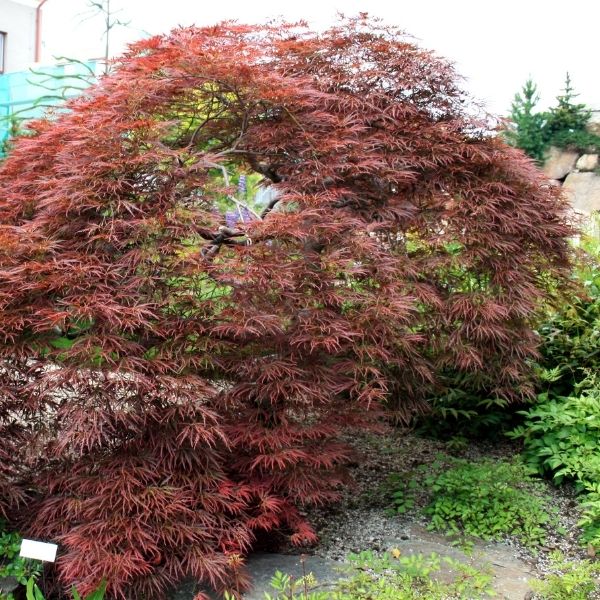
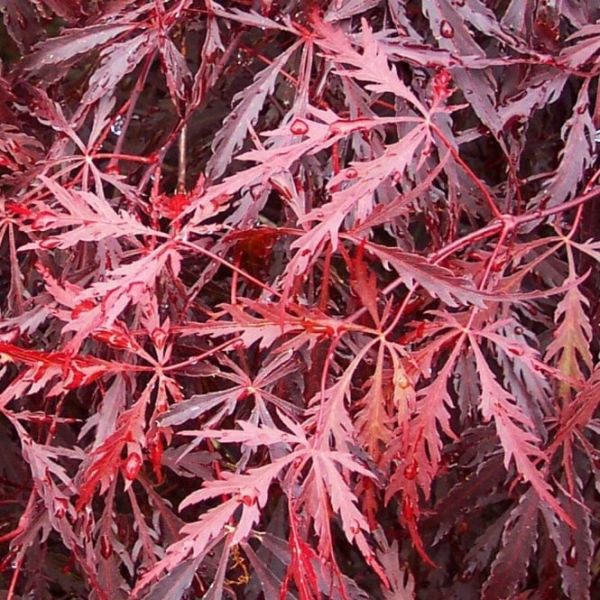
Tamukeyama Japanese Maple
Acer palmatum var. dissectum 'Tamukeyama'
19 reviews
Tamukeyama Japanese Maple
Acer palmatum var. dissectum 'Tamukeyama'
19 reviews
- Burgundy foliage adds a pop of color to any landscape
- Grows well in both full sun and partial shade
- Low maintenance and easy to care for
- Recommended by landscape designers for optimal fit in real yards
$126.00
$180.00
30% Off
- Ships to 43215 in 3 to 7 days
- Free Shipping Over $150
- Plant Arrival Guarantee
- In Stock
- Free Plant Consult
$200 - Landscape-Approved: Every Plant We Sell Comes With Design Expertise Behind It
- 1.5 Gallon 2-3 Feet
- 2.5 Gallon 2-3 Feet
- 3.5 Gallon
Not just beautiful - intentionally selected by ShrubHub's 3D landscape design team to fit real-world spaces and maximize yard potential.
Why Tamukeyama Japanese Maple?
Tamukeyama Japanese Maple (Acer palmatum var. dissectum 'Tamukeyama') is a popular choice for its attractive qualities. Its deep burgundy-red leaves change to a vibrant crimson in the fall, providing a stunning display of color. With its cascading, weeping branches, the tree adds elegance to any landscape. This cultivar is also known for its compact size, making it suitable for smaller gardens or as a focal point in containers.
People who loved this plant also bought
Sunlight
The Tamukeyama Japanese Maple tree requires partial shade to full sun, ideally receiving dappled sunlight throughout the day. It can tolerate some direct sunlight, but too much exposure may lead to leaf scorching.
Watering
Tamukeyama Japanese Maple requires regular watering, especially during dry periods. It prefers moist, well-drained soil. It is important to water deeply but avoid overwatering to prevent root rot.
Fertilizing
The fertilizer requirement for Tamukeyama Japanese Maple is a balanced fertilizer with a ratio of 10-10-10 or 14-14-14. It is recommended to apply the fertilizer in early spring, before new growth appears, and again in early summer.
Tamukeyama Japanese Maple
Acer palmatum var. dissectum 'Tamukeyama'
Description:
The Tamukeyama Japanese Maple, scientifically known as Acer palmatum var. dissectum 'Tamukeyama', is a stunning deciduous tree that originates from Japan. It is a popular cultivar of the Japanese Maple due to its beautiful deep red foliage and unique cascading form. This variety is highly regarded for its outstanding ornamental qualities and is often used as a focal point in gardens or landscapes.
Foliage:
The Tamukeyama Japanese Maple showcases deeply cut, seven-lobed leaves that are a vibrant burgundy or crimson color. The finely dissected foliage gives the tree an elegant and delicate appearance. The leaves maintain their striking red hue throughout spring and summer, gradually turning a rich scarlet in the fall. This color transformation provides a striking contrast against the traditional autumn backdrop.
Form and Size:
This Japanese Maple cultivar has a graceful and cascading growth habit, forming a dome-shaped accent tree with gently weeping branches that create an attractive, layered effect. The average height at maturity ranges between 6 to 10 feet, with a slightly wider spread. The compact size and beautiful form make it an excellent choice for smaller gardens, courtyards, or as an accent specimen in larger landscapes.
Hardiness and Landscape:
The Tamukeyama Japanese Maple is classified as a cold-hardy tree, able to thrive in USDA Hardiness Zones 5-8. It prefers partial shade or filtered sunlight but can tolerate full sun with adequate watering and soil moisture. It is essential to provide well-draining soil that is rich in organic matter to ensure the health and longevity of the tree. The Tamukeyama Japanese Maple is best suited for gardens, borders, Japanese-style gardens, or as a focal point in a landscape design.
Maintenance:
Pruning is rarely required for the Tamukeyama Japanese Maple, though occasional removal of dead or damaged branches can be done in late winter or early spring. It is essential to maintain consistent moisture levels and avoid drought stress, especially during hot summer months. Applying a layer of mulch around the base of the tree helps retain moisture and regulate soil temperatures. Additionally, fertilization can be done in early spring using a balanced slow-release fertilizer to promote healthy growth and vibrant foliage.
Overall:
The Tamukeyama Japanese Maple is a magnificent and highly sought-after variety that adds a touch of elegance and color to any landscape. Its distinctive cascading form, captivating burgundy foliage, and adaptability to a range of growing conditions make it a prized addition to gardens, courtyards, and other outdoor spaces. Whether used as a focal point or incorporated into a larger design scheme, this cultivar promises to bring beauty and interest throughout the seasons.
Plant Information:
| Botanical Name: | Acer palmatum var. dissectum 'Tamukeyama' |
| USDA Zones: | 5 - 8 |
| Water: | Moderate |
| Exposure: | Full Sun |
| Soil Needs: | Well Drained |
| Mature Height: | 6 - 10 feet |
| Mature Spread: | 10 - 12 feet |





Pollination Info
Pollination Information for Tamukeyama Japanese Maple
- Scientific Name: Acer palmatum var. dissectum 'Tamukeyama'
- Common Name: Tamukeyama Japanese Maple
Description:
Tamukeyama Japanese Maple is a beautiful deciduous tree that is known for its characteristic deep red-purple foliage. It is a popular choice for landscaping due to its attractive and unique appearance.
Pollination:
Tamukeyama Japanese Maple is an ornamental tree and primarily grown for its aesthetic value rather than for producing fruit or seeds. As a maple tree, it has inconspicuous flowers that are not showy and do not attract pollinators like bees or butterflies.
Propagation:
To propagate the Tamukeyama Japanese Maple, it is commonly done through vegetative methods such as softwood or hardwood cuttings. This ensures that the new plants retain the desired characteristics of the parent tree, including its attractive foliage color.
Considerations:
Since Tamukeyama Japanese Maple does not rely heavily on pollination for its growth or reproduction, it can be planted as a standalone ornamental tree without any concerns about cross-pollination or fruit production.
FAQ
Tamukeyama Japanese Maple (Acer palmatum var. dissectum 'Tamukeyama') - FAQ
General Questions
1. What is a Tamukeyama Japanese Maple?
A Tamukeyama Japanese Maple, scientifically known as Acer palmatum var. dissectum 'Tamukeyama', is a deciduous shrub/small tree known for its beautiful red leaves and cascading branches. It is a popular ornamental plant in gardens and landscapes.
2. How tall and wide does the Tamukeyama Japanese Maple grow?
Tamukeyama Japanese Maple typically grows to a height of 6 to 8 feet (1.8 to 2.4 meters) and spreads about 8 to 12 feet (2.4 to 3.7 meters) wide.
3. What is the growth rate of Tamukeyama Japanese Maple?
The growth rate of Tamukeyama Japanese Maple is considered slow to moderate. It may grow around 6-12 inches per year.
4. Is it suitable for container gardening?
Yes, Tamukeyama Japanese Maple can be grown in containers. However, it is essential to choose a large enough container to accommodate its spreading roots and provide adequate drainage.
5. Can Tamukeyama Japanese Maple be grown indoors?
While it is possible to grow Tamukeyama Japanese Maple indoors, it requires a lot of care, including providing the right amount of light, temperature, and humidity. It is generally more successful when grown outdoors.
Care and Maintenance
6. What is the ideal location for planting Tamukeyama Japanese Maple?
Tamukeyama Japanese Maple thrives in partially shaded areas. It prefers moist, well-drained soil with a slightly acidic to neutral pH.
7. How often should I water this tree?
Regular watering is crucial for the Tamukeyama Japanese Maple, especially during hot and dry periods. It is recommended to keep the soil evenly moist but not waterlogged.
8. Does it require pruning?
Tamukeyama Japanese Maple benefits from occasional pruning to maintain its desired shape and remove any dead or crossing branches. Pruning is best done during late winter or early spring before new growth appears.
9. How can I fertilize the tree?
Using a balanced slow-release or liquid fertilizer specifically formulated for Japanese Maples in the early spring is ideal. Follow the instructions provided on the fertilizer packaging.
Common Issues
10. What are common diseases or pests that affect Tamukeyama Japanese Maple?
The tree can be susceptible to diseases such as leaf spot, powdery mildew, and root rot. Common pests include aphids, scales, and caterpillars.
11. How can I prevent or treat these diseases and pests?
To prevent diseases, ensure good air circulation, avoid overhead watering, and remove and dispose of any infected leaves. For pests, regular monitoring, insecticidal soaps, and horticultural oils can help control infestations.
12. Why are the leaves turning brown?
Brown leaves on a Tamukeyama Japanese Maple can indicate various issues, including underwatering, overwatering, nutrient deficiencies, or environmental stress. Proper watering and ensuring the right growing conditions can help prevent this.
13. Can Tamukeyama Japanese Maple tolerate cold temperatures?
Yes, Tamukeyama Japanese Maple is hardy to USDA zones 5-9, which means it can withstand cold temperatures and frost. However, young trees may benefit from some winter protection.
Propagation
14. How can I propagate Tamukeyama Japanese Maple?
Propagation of Tamukeyama Japanese Maple can be done through methods like softwood cuttings, layering, or grafting. It is often best left to experienced gardeners or professionals.
15. When is the best time to propagate this tree?
Propagating Tamukeyama Japanese Maple is typically done during late spring or early summer when the plant is actively growing. Softwood cuttings taken during this time have the highest success rate.
Remember to consult with local nurseries or gardening experts for specific guidance tailored to your region and climate conditions.
Planting & Care
Tamukeyama Japanese Maple (Acer palmatum var. dissectum 'Tamukeyama')
Planting
- Choose a location that receives partial shade to protect the tree from extreme sunlight.
- Ensure the soil is well-draining and rich in organic matter.
- Dig a hole that is wider but approximately the same depth as the root ball.
- Gently place the tree in the hole, making sure it sits at the same level it was previously growing.
- Backfill the hole with soil, lightly firming it around the roots to eliminate air pockets.
- Water thoroughly after planting to settle the soil.
Care
- Watering: Keep the soil evenly moist, especially during the first few years of growth. Water deeply to reach the entire root zone.
- Pruning: Prune your Tamukeyama Japanese Maple during late winter or early spring to remove any dead, damaged, or crossing branches. Avoid heavy pruning as this may distort the natural shape of the tree.
- Fertilization: Apply a balanced slow-release fertilizer in early spring before new growth appears. Follow the manufacturer's instructions for dosage.
- Mulching: Apply a layer of organic mulch around the base of the tree, keeping it a few inches away from the trunk. Mulch helps retain moisture, suppresses weeds, and protects the tree's shallow root system.
- Pest and Disease Control: Watch out for common pests such as aphids, scale insects, or caterpillars. Treat any infestations promptly using organic or chemical solutions recommended for Japanese Maples. Additionally, ensure good air circulation and avoid overcrowding to prevent diseases like powdery mildew.
With proper planting and care, your Tamukeyama Japanese Maple will thrive and add beauty to your landscape.
Check Out These Verified Customer Reviews:
Customer Reviews
4.7 out of 5 based on 19 reviews
Thank you! Your review has been submitted.
Customer service was excellent, they promptly answered all my questions.
The color of the leaves on the Japanese Maple is even more beautiful in person.
Better than expected, love it!
Item has been added to your cart.



